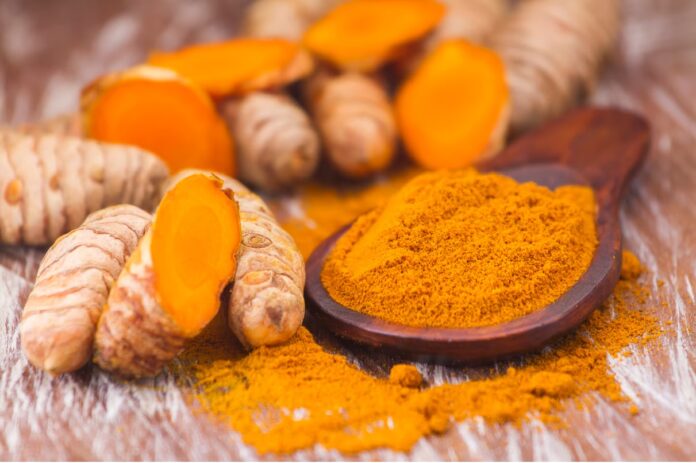A recent study has found toxic levels of lead in turmeric sold in India, Nepal, and Pakistan, with some samples containing lead concentrations far exceeding the safety limit set by India’s Food Safety and Standards Authority (FSSAI). These findings raise serious public health concerns due to the widespread use of turmeric in cooking and traditional medicine.
The study, published in the journal Science of The Total Environment, analyzed turmeric samples collected from 23 cities across India, Pakistan, Sri Lanka, and Nepal. According to the research, approximately 14% of all the tested turmeric samples had lead levels higher than the permissible limit of 10 micrograms per gram (µg/g). The maximum concentration allowed by the FSSAI is 10 µg/g, while some samples exceeded even 2,000 µg/g, far beyond what is considered safe for consumption.
Cities across India, Nepal, and Pakistan showed widespread lead contamination, with Patna in India registering the highest concentration at an alarming 2,274 µg/g. Other major cities with high levels of lead included Guwahati (127 µg/g), Karachi, Islamabad, Peshawar, and Kathmandu. These findings are a grave reminder of the need for urgent intervention to ensure food safety in the region.
The researchers from Stanford University, along with collaborators from Pure Earth and India’s Freedom Employability Academy, highlighted that the source of contamination is primarily the addition of lead chromate. This chemical is used to enhance the bright yellow colour of turmeric, making it appear more appealing. Lead chromate is a yellow pigment generally used in industrial products, such as paints. Its usage in food products like turmeric is concerning as it introduces harmful levels of lead to something widely consumed by millions of people.
Turmeric is a commonly used spice in South Asia and plays a crucial role in cultural and culinary traditions. However, the study’s findings reveal a dark side to its production, where loose and unregulated turmeric is far more contaminated compared to branded, packaged varieties. The study found that polished turmeric roots and loose powders are the most susceptible to contamination, whereas branded turmeric products contained relatively lower lead levels. The polishing process, often employed to make turmeric appear vibrant, tends to increase the risk of contamination with lead chromate.
Lead exposure poses serious health risks, especially to children. The heavy metal can interfere with bodily functions by mimicking calcium and accumulating in the bones. Prolonged exposure can lead to adverse health effects, such as developmental delays, reduced intelligence, and behavioural problems in children. Previous studies have shown that even minimal lead exposure, as low as 3.5 micrograms per deciliter (µg/dL) in the blood, can impair cognitive and behavioural functions.
According to the World Health Organization (WHO), over 800 million children worldwide are estimated to have blood lead levels significantly above safe thresholds. In South Asia, where turmeric is commonly used in daily meals, these elevated lead levels represent a substantial public health crisis. Children are especially vulnerable to lead poisoning, which can lead to lifelong learning and developmental disabilities.
The contamination of turmeric with lead is not a recent development, as previous studies have found a similar pattern in the turmeric supply chains of other South Asian countries, including Bangladesh. The practice of adding lead chromate to low-quality turmeric roots to enhance their appearance has been ongoing for decades. Lead chromate is used to give turmeric an artificially vibrant yellow colour, which increases its marketability. However, this practice comes at a high cost to public health.
The researchers have called for a deeper investigation into the supply chains of turmeric across South Asia to address the issue at its root. “Given the overwhelmingly elevated lead levels in turmeric from these locations, urgent action is needed to halt the practice of lead chromate addition in the turmeric supply chain,” they urged in their study. Regulatory authorities in India, Nepal, and Pakistan must take proactive measures to monitor and control lead contamination in turmeric and ensure that such hazardous additives are no longer used in food products.
The study also highlights the importance of purchasing turmeric from reliable sources. Consumers are urged to buy packaged and branded turmeric products, which are more likely to undergo quality control checks compared to loose and unregulated turmeric powders. Until there is a systematic change in the production and quality monitoring of turmeric, the risk to public health will persist, affecting millions of consumers across South Asia.
The findings underscore the urgent need for governments in the region to implement stricter regulations and carry out regular inspections of turmeric producers. Without comprehensive action, the problem of lead contamination in turmeric will continue to pose a significant health hazard, particularly to children and vulnerable populations. The onus is on regulatory bodies to ensure that toxic lead levels in a common household spice do not become a daily health risk for millions of people in South Asia.

